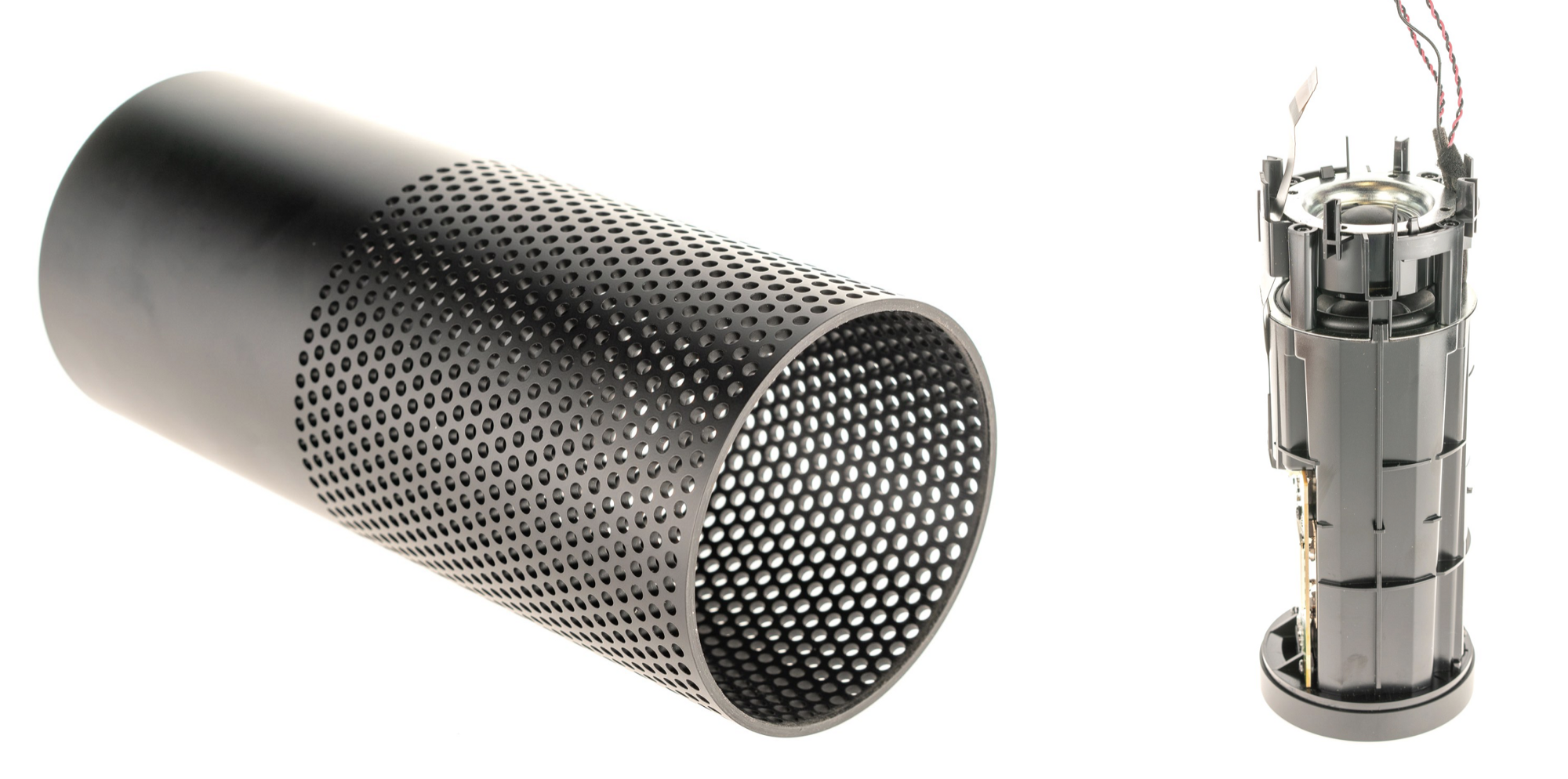

In a truly fascinating exploration into two smart speakers – the Sonos One and the Amazon Echo – BoltVC’s Ben Einstein has found some interesting differences in the way a traditional speaker company and an infrastructure juggernaut look at their flagship devices.
The post is well worth a full read but the gist is this: Sonos, a very traditional speaker company, has produced a good speaker and modified its current hardware to support smart home features like Alexa and Google Assistant. The Sonos One, notes Einstein, is a speaker first and smart hardware second.
“Digging a bit deeper, we see traditional design and manufacturing processes for pretty much everything. As an example, the speaker grill is a flat sheet of steel that’s stamped, rolled into a rounded square, welded, seams ground smooth, and then powder coated black. While the part does look nice, there’s no innovation going on here,” he writes.
The Amazon Echo, on the other hand, looks like what would happen if an engineer was given an unlimited budget and told to build something that people could talk to. The design decisions are odd and intriguing and it is ultimately less a speaker than a home conversation machine. Plus it is very expensive to make.
Pulling off the sleek speaker grille, there’s a shocking secret here: this is an extruded plastic tube with a secondary rotational drilling operation. In my many years of tearing apart consumer electronics products, I’ve never seen a high-volume plastic part with this kind of process. After some quick math on the production timelines, my guess is there’s a multi-headed drill and a rotational axis to create all those holes. CNC drilling each hole individually would take an extremely long time. If anyone has more insight into how a part like this is made, I’d love to see it! Bottom line: this is another surprisingly expensive part.

Sonos, which has been making a form of smart speaker for 15 years, is a CE company with cachet. Amazon, on the other hand, sees its devices as a way into living rooms and a delivery system for sales and is fine with licensing its tech before making its own. Therefore to compare the two is a bit disingenuous. Einstein’s thesis that Sonos’ trajectory is troubled by the fact that it depends on linear and closed manufacturing techniques while Amazon spares no expense to make its products is true. But Sonos makes speakers that work together amazingly well. They’ve done this for a decade and a half. If you compare their products – and I have – with competing smart speakers an non-audiophile “dumb” speakers you will find their UI, UX, and sound quality surpass most comers.
Amazon makes things to communicate with Amazon. This is a big difference.
Where Einstein is correct, however, is in his belief that Sonos is at a definite disadvantage. Sonos chases smart technology while Amazon and Google (and Apple, if their HomePod is any indication) lead. That said, there is some value to having a fully-connected set of speakers with add-on smart features vs. having to build an entire ecosystem of speaker products that can take on every aspect of the home theatre.
On the flip side Amazon, Apple, and Google are chasing audio quality while Sonos leads. While we can say that in the future we’ll all be fine with tinny round speakers bleating out Spotify in various corners of our room, there is something to be said for a good set of woofers. Whether this nostalgic love of good sound survives this generation’s tendency to watch and listen to low resolution media is anyone’s bet, but that’s Amazon’s bet to lose.
Ultimately Sonos is strong and fascinating company. An upstart that survived the great CE destruction wrought by Kickstarter and Amazon, it produces some of the best mid-range speakers I’ve used. Amazon makes a nice – almost alien – product, but given that it can be easily copied and stuffed into a hockey puck that probably costs less than the entire bill of materials for the Amazon Echo it’s clear that Amazon’s goal isn’t to make speakers.
Whether the coming Sonos IPO will be successful depends partially on Amazon and Google playing ball with the speaker maker. The rest depends on the quality of product and the dedication of Sonos users. This good will isn’t as valuable as a signed contract with major infrastructure players but Sonos’ good will is far more than Amazon and Google have with their popular but potentially intrusive product lines. Sonos lives in the home while Google and Amazon want to invade it. That is where Sonos wins.

